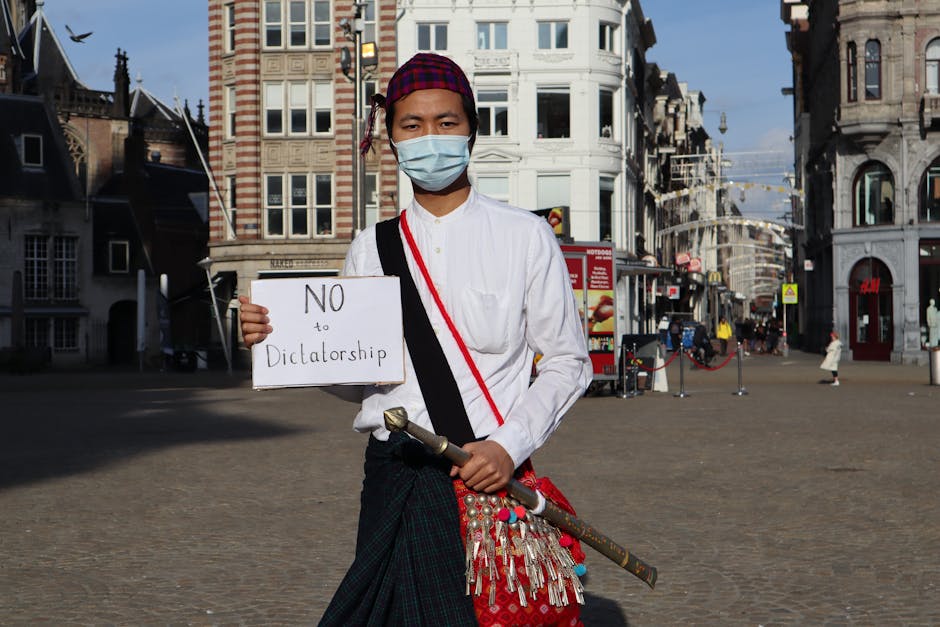Overview of the Protests
On August 14, 2025, violent clashes erupted between anti-government protesters and supporters of the ruling Serbian Progressive Party (SNS) in Novi Sad, Serbia. The confrontations resulted in 64 supporters of the ruling party and 16 police officers being injured. The protests, which have been ongoing for months, are primarily driven by demands for early parliamentary elections and accountability for the deadly collapse of a railway station canopy late last year.
Causes of the Protests
The protests in Serbia began several months ago, with activists calling for early parliamentary elections and greater government accountability. One of the key incidents that sparked the protests was the collapse of a railway station canopy in 2024, which resulted in fatalities. The opposition has been pressing the government to take responsibility for the incident and to dissolve the parliament.
Escalation of Violence
The situation escalated on August 14, 2025, in Novi Sad, where protesters gathered around the office of the ruling Serbian Progressive Party (SNS). Supporters of the SNS and anti-government protesters engaged in a standoff, throwing flares and other objects at each other. The protesters also smashed the windows of the SNS building.
Police Response
In response to the escalating violence, Serbian police deployed tear gas and crowd control vehicles to disperse the protesters. The police actions were seen as a major escalation of the nine-month-long protests. On Friday evening, August 15, 2025, police in Belgrade used tear gas to disperse anti-government protesters who were throwing firecrackers and flares at police officers.
Arrests and Injuries
Dozens of anti-government protesters were arrested in connection with the clashes. In addition to the 64 supporters of the ruling party and 16 police officers injured in Novi Sad, there were reports of numerous other injuries and arrests across the country.
Government Response
Serbian President Aleksandar Vucic addressed the nation, stating that the government would take all necessary measures to maintain order and stability. The government has characterized the protests as attempts to destabilize the country and undermine the democratic process.
International Reaction
The international community has been monitoring the situation closely, with various foreign governments and organizations calling for calm and restraint. The European Union, in particular, has expressed concern over the escalation of violence and urged all parties to engage in dialogue.
Expert Analysis
Implications
The ongoing protests and escalating violence have significant implications for Serbia's political stability and its relations with the international community. The government's handling of the situation will be closely watched by European and other international observers.
Conclusion
The situation in Serbia remains fluid and uncertain, with protests and clashes continuing to erupt across the country. The government's response to the protests and the demands of the opposition will be crucial in determining the course of events in the coming days and weeks.
Additional Context
Serbia has a complex history of political instability and social unrest. The country has been a candidate for EU membership since 2009 and has been working to align its laws and policies with EU standards. However, the protests highlight the challenges facing the government in addressing the concerns of its citizens and maintaining stability.
Related Developments
The protests in Serbia have drawn comparisons to other anti-government movements in the region. The government has accused external actors of attempting to destabilize the country, a claim that has been denied by the opposition and international observers.
Future Outlook
The future outlook for Serbia remains uncertain, with many questions about the government's response to the protests and the demands of the opposition. One thing is clear: the situation will continue to be closely watched by international observers, and the government's actions will have significant implications for the country's future.
Detailed Timeline
- August 14, 2025: Violent clashes erupt between anti-government protesters and SNS supporters in Novi Sad.
- August 15, 2025: Police deploy tear gas and crowd control vehicles to disperse protesters in Belgrade.
- August 16, 2025: Dozens of anti-government protesters are arrested in connection with the clashes.
Statistical Data
- 64: Number of SNS supporters injured in Novi Sad.
- 16: Number of police officers injured in Novi Sad.
- Over 100: Number of protesters arrested across Serbia.
Sources
- RT.com: "Violence erupts during nationwide protests in Serbia (VIDEOS)"
- France 24: "Serbia's police use tear gas as they clash with anti-government protesters in Belgrade"
- DW.com: "Serbia police arrest dozens of anti-government protesters"
- The Straits Times: "Serbia's police uses teargas to disperse protesters"
- The Australian: "Serbia's police use tear gas to disperse protesters"
